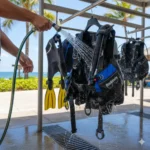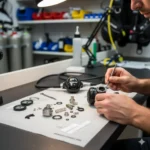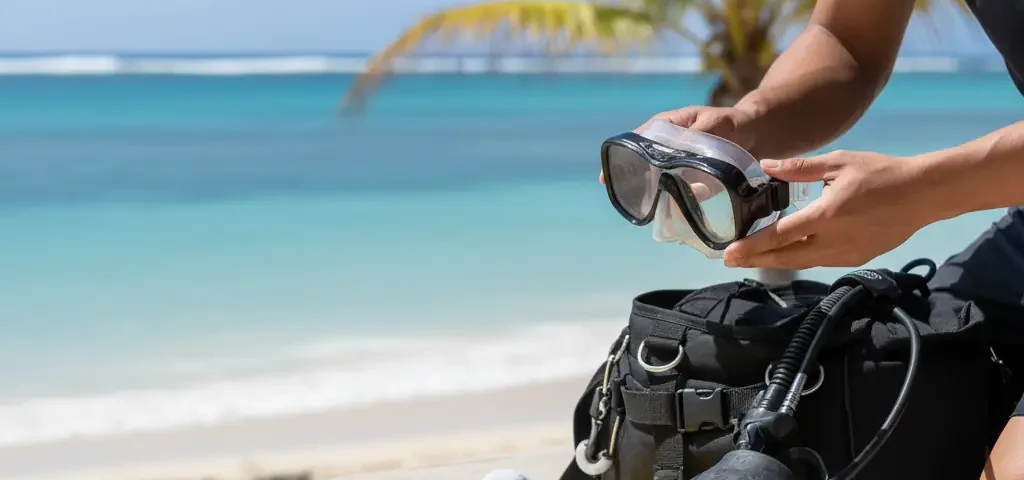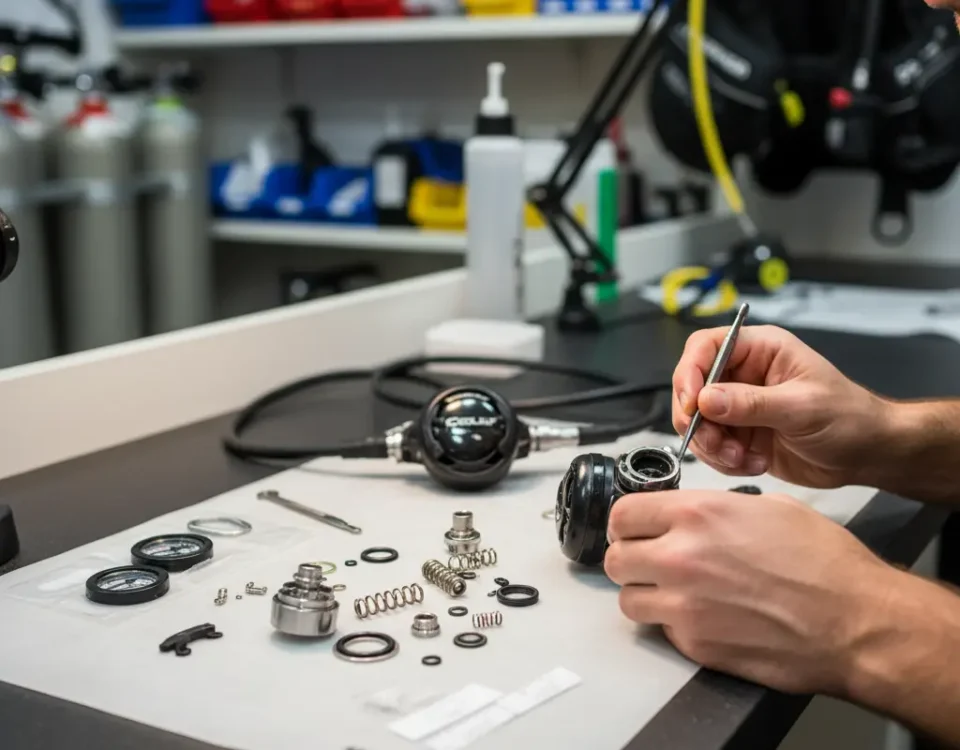
How to Take Care of Your Scuba BCD
October 9, 2025
How Often Should You Service Your Scuba Equipment?
October 9, 2025🧰 The Ultimate Scuba Gear Maintenance Checklist Before and After Diving
Proper scuba gear maintenance is key to safe and enjoyable diving. Your regulator, BCD, wetsuit, and accessories are life-support equipment — not just gear. This comprehensive scuba gear maintenance checklist shows you exactly how to inspect, clean, and care for every piece before and after a dive to ensure reliability, safety, and longevity. 🌊
Why Regular Gear Maintenance Matters
Maintaining your scuba gear isn’t just about looking professional — it’s about safety and performance underwater. Neglecting simple care routines can lead to leaks, corrosion, or equipment failure. Consistent cleaning and inspection keep your dives stress-free and extend the lifespan of expensive equipment.
🧾 Pre-Dive Scuba Gear Checklist
Before every dive, do a quick but complete check to ensure everything is in working order:
- Regulator: Test airflow; ensure there are no leaks and the mouthpiece is secure.
- BCD: Inflate and deflate completely; check valves and straps for damage.
- Tank: Verify the O-ring condition, inspect for rust, and confirm valve movement is smooth.
- Dive Computer & SPG: Check battery levels and verify proper readings.
- Weights: Securely attach and evenly distribute on the belt or integrated pockets.
- Mask, Snorkel, and Fins: Inspect for cracks, missing straps, or wear.
🧽 Post-Dive Gear Care Checklist
Saltwater, sand, and moisture are the main enemies of dive equipment. After each dive, follow this cleaning checklist:
- Rinse all equipment with fresh, clean water immediately after diving.
- Soak your regulator in lukewarm freshwater (first stage sealed) to dissolve salt crystals.
- Flush the inside of your BCD bladder with clean water, then drain completely.
- Wash wetsuits and boots with mild detergent or wetsuit shampoo; hang to dry in shade.
- Rinse masks, snorkels, and fins thoroughly; avoid direct sunlight drying.
- Dry metal parts like D-rings and buckles to prevent corrosion.
🧰 Monthly or Seasonal Maintenance
Even with regular rinsing, some parts require deeper maintenance:
- Lubricate O-rings with silicone grease to prevent cracks.
- Check hoses for bulges, cracks, or corrosion at the fittings.
- Clean dive computers with a microfiber cloth and inspect buttons for salt deposits.
- Store all equipment loosely packed in a cool, dry place.
⚙️ Annual Professional Service
Your scuba gear should be professionally serviced at least once a year or as recommended by the manufacturer. A technician will inspect your regulator, BCD, and gauges for internal wear, corrosion, and performance issues. This ensures your equipment remains reliable and ready for your next dive adventure.
📦 Storage & Travel Care
- Dry all equipment completely before storage to prevent mold.
- Store gear in a ventilated bag or dedicated dive gear rack.
- Avoid extreme heat, humidity, or direct sunlight exposure.
- When traveling, pack delicate items like your mask and computer in padded cases.
🪸 Summary — Keep Your Gear Dive-Ready
A well-maintained scuba setup means more confident, enjoyable dives and less chance of mid-dive issues. Follow this scuba gear maintenance checklist before and after every dive, schedule regular servicing, and treat your equipment with care. Your gear takes care of you underwater — make sure you do the same for it on land. 💙



